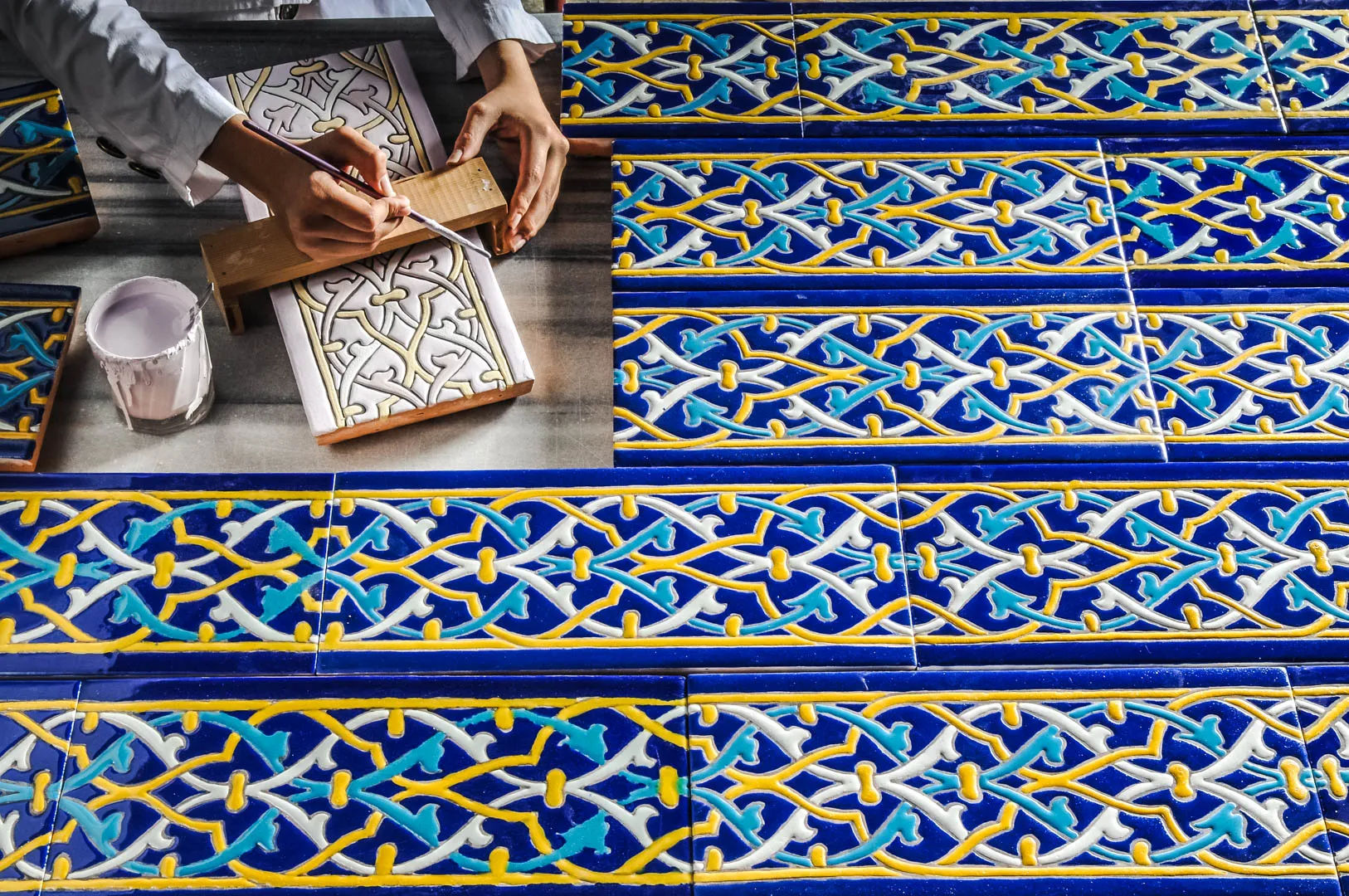
Turkish Tile Art: Modern Designs Inspired by Tradition
2 mins read 10/23/2024 Comments (0)
Tile art is one of the most rooted and elegant heritages of Turkish culture. Throughout history, this traditional art form, known for its Ottoman tiles, reached its peak especially in the 16th and 17th centuries and has become an inseparable part of Turkish culture. However, the traditional form of Turkish ceramics is evolving today, blending with modern designs and gaining a new breath in the art world.
Ottoman tiles are known for their fine craftsmanship and unique patterns. Dominated by blue and white colors, these works have gradually enriched with different color palettes and designs. During the Ottoman period, handmade tiles were typically used to adorn the walls of mosques and palaces, embellished with intricate geometric patterns and nature motifs. These examples of tile art hold significant aesthetic and architectural importance.
Today, modern tile designs provide a fresh perspective by harmonizing these elegant traditions with contemporary aesthetic understanding. Modern artists are adding a contemporary touch to Turkish ceramics while preserving traditional motifs and techniques through innovative designs and color combinations. For example, instead of the classic blue and white of Ottoman tiles, bolder and more vibrant colors are being used, resulting in designs enriched with geometric patterns and abstract figures.
Handmade tiles occupy an important place among modern designs. Each tile piece gains a unique character as it passes through the hands of its artisans. These personal touches allow each piece to be regarded as a work of art. Modern artists, by using traditional techniques while incorporating their individual creativity, ensure that each tile piece holds both historical and aesthetic value.
Another notable development in modern tile art is the increased integration of Turkish ceramics into everyday life. Traditionally used primarily for decorative objects, tiles are now finding a place in more functional areas, such as tiled kitchenware, tablecloths, and even furniture pieces. This transformation is making tile art more accessible to a broader audience and ensuring the integration of traditional art into modern life.
In conclusion, the harmonious coexistence of the historical roots of tile art and modern designs creates unique works that carry traces of both the past and the future. The delicate details of Ottoman tiles and the modern interpretations of Turkish ceramics showcase an innovative aesthetic understanding inspired by tradition. In this era, where handmade tiles are shaped by the artist's individual touches, each piece not only preserves a cultural heritage but also secures a strong place in the contemporary art world.

